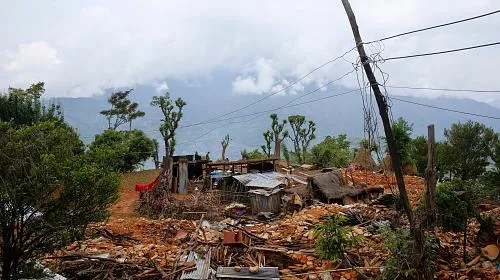CARE to distribute emergency shelter kits to 30, 000 people over the next month
Kathmandu, NEPAL (May 3, 2015) — Thousands have been left homeless following the massive earthquake that rocked Nepal on April 25, and with monsoon season less than month away, it’s a race against time to get emergency shelter to people.
According to the Government of Nepal, over 130,000 homes were destroyed and more than 85,000 partially damaged. In some villages in remote areas, over 90 percent of the houses have been destroyed or damaged.
“People are terrified of the looming monsoon rains that are only weeks away. With the rains already gradually increasing, and no shelter, there’s a real concern that people will lose whatever assets they still have, like vital food stocks designed to get them through the winter,” said Tom Newby, CARE Shelter Advisor currently in Nepal. “It’s critical that people receive durable emergency shelter that can protect them while they start to rebuild.”
Thousands are sleeping outside with little or no protection from the elements. Many are sharing space under makeshift tents, which increases the risk of violence towards women and girls. The approaching monsoon rains will also put people at risk of water-borne disease. Those in the rural mountainous regions are especially vulnerable to landslides.
Over the next month, CARE plans to reach 30,000 people with emergency shelter kits that include weather-resistant tarps, rope and a toolkit that will help protect them from the rains as they begin to rebuild their homes. As people more towards recovery, CARE will provide the support to help people make changes to the way they build, so their homes are safer and more resilient when the next earthquake strikes. In some cases, CARE will provide livelihood support or cash vouchers to help accelerate their own rebuilding process.
Media contacts
Holly Frew +1-770-842-6188 hfrew@care.org or Nicole Harris +1-404-735-0871 nharris@care.org
About CARE
Founded in 1945, CARE is a leading humanitarian organization fighting global poverty. CARE has more than six decades of experience helping people prepare for disasters, providing lifesaving assistance when a crisis hits, and helping communities recover after the emergency has passed. CARE places special focus on women and children, who are often disproportionately affected by disasters. To learn more, visit www.care.org.

